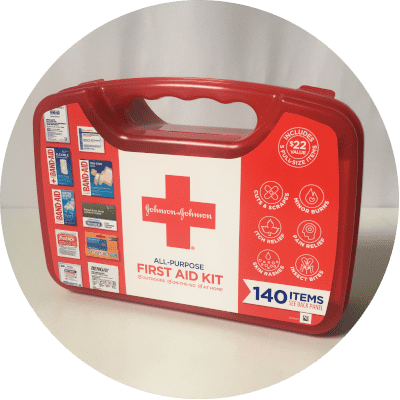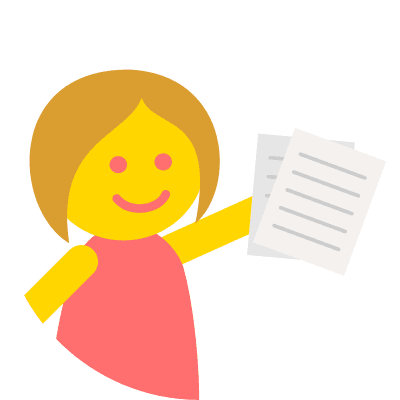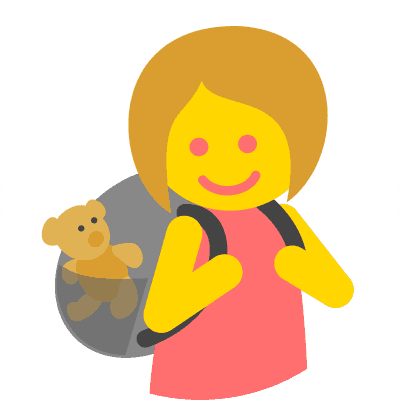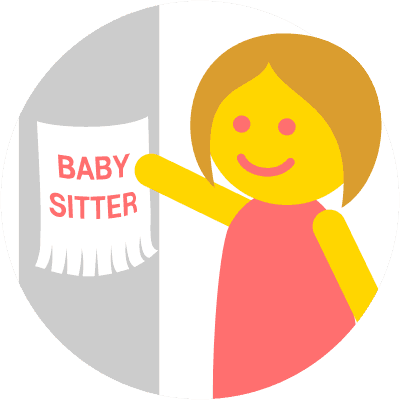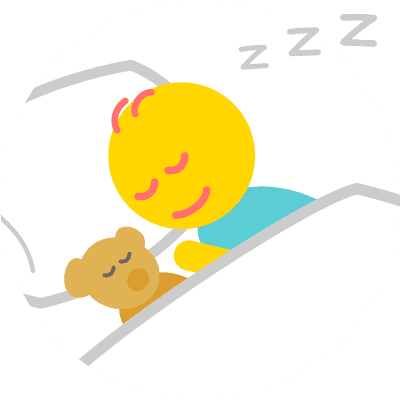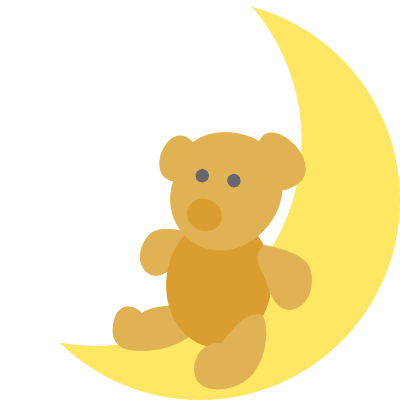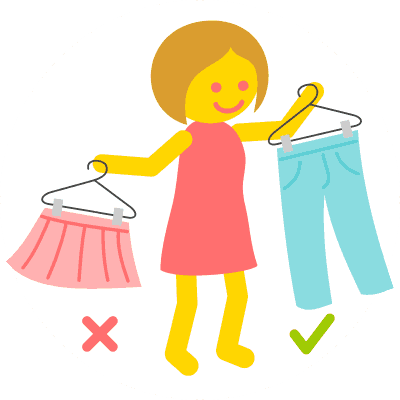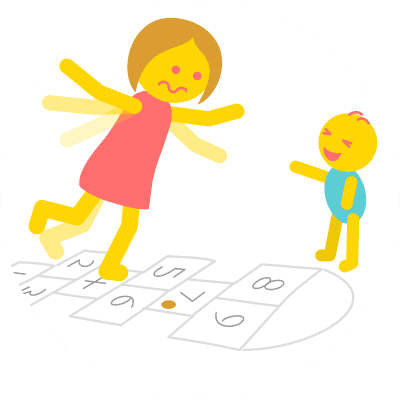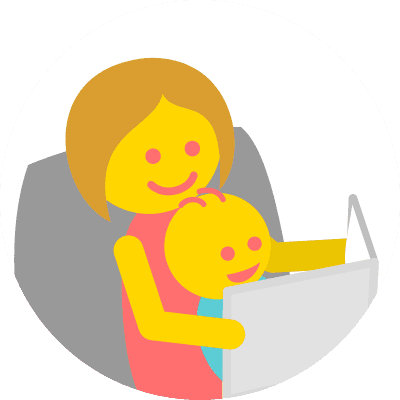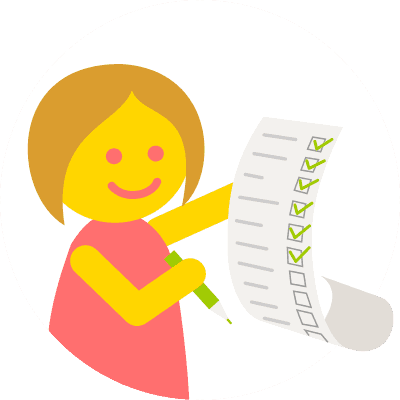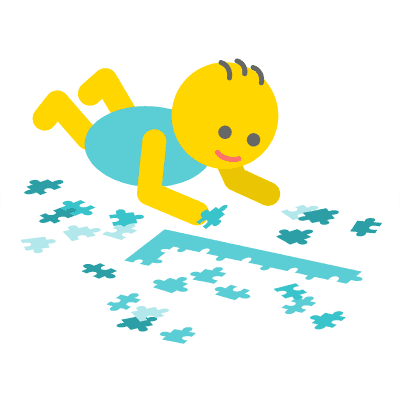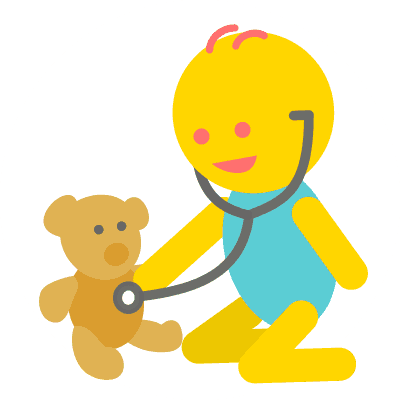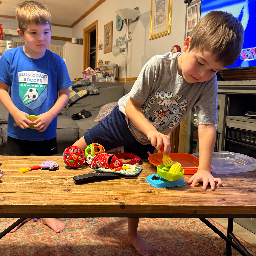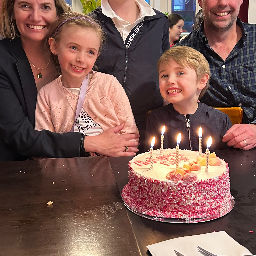Babysitting Binder (20 Documents & Fun Items to Include!)
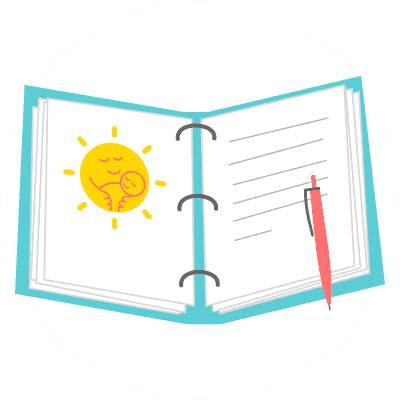

Written & Illustrated by
Matthew James Taylor
Kidsit Founder, General Manager

Babysitting Video by
Lydia Kutz
Babysitter, Infant Swimming Resources Instructor

Reviewed & Edited by
Renee Irving Lee, B.Ed.
Special Education Teacher, Swim Coach, Childrens Author
What To Include In Your Babysitting Binder
- Essential Documents: Include your babysitter's manual, copies of certifications (e.g., First Aid/CPR), and an "All About Me" page with your contact information and background.
- Child-Specific Information: Provide detailed profiles for each child, covering routines, preferences, allergies, and any special instructions.
- Emergency Preparedness: List emergency contacts, medical information, and procedures for various situations to ensure safety.
- Household Guidelines: Outline house rules, meal preferences, screen time limits, and any other expectations to maintain consistency.
- Interactive Elements: Incorporate fun activities, games, or coloring pages to engage children during your care.
- Organizational Tools: Use dividers and sheet protectors to keep documents organized and easily accessible.
When you're babysitting, there's a lot of information that you will need to keep track of.
The problem, however, is trying to keep all of it organized!
A babysitting binder is perfect to keep all of your critical babysitting info together in one place.
I really like having a physical paper copy of all of my information. You could create a "digital" babysitting binder on a mobile phone or tablet, but if your battery gets completely drained then you lose access to all of your information.
What kind of things should you include in your babysitting binder? You'll want to get a large high-quality binder to hold your babysitter's manual and all of your certifications. As well as family-specific information including rules of each household, important information about each child, emergency contact information, and more.
In this article, I'm going to show you everything you'll need to get your babysitting binder all set up.
Lydia has been working in the childcare industry for 15 years, and owned a childcare agency in Florida, USA for 7 years. In this video Lydia shows us through her babysitting binder and lists all the important documents it should contain.
Start With An Empty Binder
A binder is a perfect place to store all of your babysitting documents and information.
Size
I recommend getting at least a 1-inch thick binder that can easily hold A4 documents. If you're storing information for multiple families in a single binder, your paperwork will really start to add up fast.
Get a binder you can seal
I'd also suggest buying a binder that can be sealed shut with a zipper. That way you don't need to worry about all of your papers falling out or needing to hold your binder in a certain way. Particularly if you're walking or taking public transport to your babysitting jobs.
Don't skimp on quality
It's definitely worth paying the extra money to have a good quality binder. The difference between high-quality and low-quality is usually only a few dollars, but it can make all the difference.
Otherwise, you may find you're constantly struggling with closing the binder rings, having the outer coating of your binder peel off, and other hassles.
Personalize it
If your binder has got a clear plastic sleeve on the front of it, you can create a printable cover to slide inside. If not, I'd find some other way to personalize your binder so that you can easily recognize it at a glance.
OK, now what do we put inside?
1. Your Babysitter's Manual
The first thing you want to include in your babysitter binder is your babysitter's manual. If you've completed a babysitting course to get your certification, you should already have one of these.
It's just a really handy reference in case anything happens that you don't know what to deal with. For example, if you can't get a child to go to bed.
Even babysitters with years of experience still refer back to their babysitter's manual at times.
2. A Copy Of Your Qualifications
New families that you're babysitting for may want to see qualifications like your babysitter's license and First Aid / CPR certifications.
Just make photocopies of your documents and keep extra copies in your binder. That way you don't need to carry original licenses and certificates around or remember to bring them when babysitting for a new family for the first time.
Common babysitter credentials
| Childcare credential | Percent |
|---|---|
| 25.48% | |
| 24.74% | |
| 14.78% | |
| 12.49% | |
| 7.29% | |
| 5.09% | |
| 8.88% | |
| 16.14% | |
| 34.79% | |
| 21.47% | |
| 28.63% |
(Babysitting statistics calculated weekly from our live member data — Updated 21 Dec 2025)
See our guide on babysitting qualifications for a complete list.
3. Your "All About Me" Page
You want to keep a few copies of your "all about me" page inside your binder and give them out whenever you're babysitting for a new family.
It's basically your babysitting business card.
You can include information like:
- Your name
- Your phone number
- Your email address
- What school or college you go to
- Your age
- A small "about me" section such as your hobbies and interests
It just gives parents a chance to learn a little bit more about you. Plus it's a quick reference so they know how to contact you if they need a babysitter again in the future.
Some families may even keep it on their fridge so it's always available!
Also try my free babysitting business card maker!
4. Important Information Page
You can make one page in your binder to summarize all of the important things that you need to remember and have it easily available.
This is generic information that will apply to all families you babysit for.
Some good points to include are:
- Basic First Aid information and acronyms such as RICE (rest, immobilize, cold, elevate)
- A list of situations when it's appropriate to call EMS/911
- The poison control center number for your area
- Basic babysitting tips and reminders like "Don't shake, take a break" and "Never leave a child alone or take your eyes off them"
5. Post It Notes
It's a great idea to keep a pad of sticky notes in your binder. You never know when parents might give you a piece of miscellaneous information that you need to remember.
It might be a small detail that's only applicable for one babysitting shift, so it doesn't warrant its own page in your binder. Post It notes look more organized than having a scrap pieces of paper everywhere for writing miscellaneous notes on.
6. Family-Specific Information
The family information form is the most important. This basically takes down all of the families information, names, phone numbers, addresses, emails, the kids birthdays, kids names, allergies, food and medication, and then if there's any issues, behavioral, enxiety issues or anything along those lines. Then there is other information that I put in about how they heard about me and emergency contacts.
As you grow your babysitting business you want to make sure you collect all of your family's information, this is how you're going to know your family. When your client pool starts growing you don't want to mix up family information, for example, if family A has a child who's allergic to dairy, and family B has an allergic reaction to peanuts, you DO NOT want to mix that information up!
It's really important that you go through this information before you sit for a family so that you're refreshed and you know exactly the information you need to know before babysitting.

Babysitter, Infant Swimming Resources Instructor
St Petersburg, Florida, United States
Each family that you babysit for should have their own little section in your binder.
You can separate your binder using divider sheets and tabs with the name of each family. That way it's easy to flip right to the information that you need.
When you start babysitting for a new family, you should arrive 5 or 10 minutes early to collect some information from parents before they leave. You can call this the "parent interview."
You might even want to email a copy to parents a couple of days in advance if they'd prefer to fill out all the information for you before you get there.
Download our printable parent details form, it's perfect for keeping family information in one place.
Also, see our list of things to bring to a babysitting interview and download our checklist.
Rules Of The House
Every family is different in what rules they have and how they enforce them.
Some common house rules might include:
- Children only being allowed to watch TV during certain times or lengths of time
- No food outside of the kitchen
- No eating specific foods (like sugary foods) after a certain time
- No running in the house
- Keep your hands and feet to yourself
Parents should also let you know strategies on how they manage challenging behavior (such as a time out) when children don’t follow the rules.
It's a good idea to review the house rules for a family each time you babysit. That way you can make sure that you're keeping yourself consistent with what the parents want.
Important Information About the Children
This is a sheet of information that summarizes important information that you need to know about each child.
It includes things like:
- Allergies
- Any chores they're expected to do
- Tips to calm them down
- Their daily routines
- Snack time and what they should have
- Water drinking (with checkboxes to make sure kids are drinking enough water)
- Miscellaneous child-specific rules
- Any other notes or important information
Emergency Information
This information will be different than your own "important information" page earlier in the binder. This information is family-specific.
It includes details such as:
- The closest hospital
- Contact information for nearby family and friends
- Child's doctor's phone number and address
- Phone numbers for both parents
- In case of emergency, call 911
Download our free emergency contact sheets and add them to your binder too!
Meal Plans
It's a good idea to have some blank "meal plan" pages that you can fill in for each babysitting shift.
Parents can let you know food details before they go and you can fill in details like snacks, breakfast, lunch, or dinner that the kids will need, as applicable.
Your meal plan should also include some brief instructions on how to prepare the meal if they're more complicated than just reheating leftovers or frozen meals in the microwave.
If you're going to be ordering food, it's a good idea to get the name of a restaurant that the kids enjoy from the parents as well as their usual orders.
Babysitting Plan
For each babysitting session, you may like to create a babysitting plan in advance.
This is a schedule that just gives a rough idea of what you want to do to keep the kids busy that particular day, broken down hour by hour.
That way you're way less likely to run into a situation where the kids are bored and you have no idea what to do.
Of course, you can always run through our over 200 babysitting games and activities for all ages to get new entertainment ideas to try.
A "Welcome Home" Checklist Or Summary
This is a short page that you give to parents when they get home after you're done babysitting.
It just gives them some basic information like how the day went, what the kids did and how they behaved, any crafts they made or games they played, etc.
WiFi Password
This is kind of a miscellaneous detail that doesn't go on any particular page. Many parents will give you their WiFi password, so you should take note of it somewhere in your binder.
It can be useful if you want to play kid's shows from Netflix or Youtube while you're babysitting. Plus it will save you from using your phone data if you want to use the Internet once the children have gone to bed.
See our list of things to do when the kids are asleep to make the most of your downtime.
7. A Mini First Aid Kit
You can buy really small First Aid kids that will fit easily into your binder. They include just the basics like band-aids, a pair of tweezers, and other essentials.
You should always have one with you, in case the children get hurt or have an accident.
At Kidsit, we recommend this first aid kit for babysitters, it's not very expensive, make sure you get one!
8. Your Wallet
Keep your wallet in your babysitter binder. It's a good way to keep things like your driver's license and other identification all in one place.
You might also want to have some extra money in case you need to order pizza.
9. Your Phone Or A Parent's Phone
If the family that you're babysitting for doesn't have a landline, then you'll need someone's phone to use during emergencies.
Most babysitters nowadays have their own phones. But you can borrow one from your own parents or a parent of the child you're babysitting if not.
10. Extra Storage
It's a good idea to have some storage in your binder to keep some of the items listed below organized. That way you won't just have a whole bunch of things sliding around inside your binder, and everything will be easily accessible.
A two-pocket folder is useful for storing miscellaneous paperwork. And a pencil case is a good way to store more awkwardly-shaped objects.
11. Coloring Sheets
If it's a rainy day or the children are just really bored, coloring is an awesome way to keep them busy.
You can turn it into a contest and see which child can color the most pictures creatively, and give them a prize afterward.
You can buy coloring books. Or you can find lots of free coloring sheets online that you can print off and put into your binder.
It's wise to get a wide variety of different coloring books based on the age, gender, and interests of the children you're watching.
Younger children might want Paw Patrol or Frozen coloring sheets, while older ones might want to color Star Wars characters, dinosaurs or mandala patterns.
Download our free kids coloring book and print off as many copies as you need.
12. Blank Paper
Children love coloring, but they love drawing too. It doesn't take up much more room to add some extra printer paper or lined paper to your binder.
Plus you have something to take notes on if needed as well.
You might just want to add a journal or notepad to your binder. Then you can tear out sheets of paper as kids need them, but keep any of your personal notes organized instead of on loose sheets of paper.
13. Brown Paper Bags
Brown paper bags can be used to make several different kinds of crafts. Plus they're light, compact, and easy to transport.
Get kids that you're babysitting to make puppets out of brown puppet bags and then they can use them to put on a puppet show!
Check out our kids craft activities for other awesome entertainment ideas that children love.
14. Sticker Books
Sticker books are another way to keep children entertained if they're sick of coloring or drawing.
You can buy sticker books with their favorite Disney or cartoon characters for a couple of dollars and it's often enough to keep them busy for an hour or two.
15. Writing Instruments
It's a good idea to have a pencil case with several different pens, pencils, crayons, and markers. The family you're babysitting for will probably have their own stuff at their house, but it's a good idea to bring some of your own just in case.
16. Small Toys
You can get little action figures and other small toys cheaply from the Dollar Store and give them out to children as rewards for positive behavior.
Playing cards and bubbles are also a couple of fun ways to keep kids entertained for a few hours.
Throw in some rulers and stencils to make drawing more fun too.
17. Awards
Reinforce positive behavior by giving the children rewards!
You can load up on stickers that say things like "great job!" or even just gold stars.
You can even buy little "good attitude awards" and other certificates to give to children who make the right choices, or are positive and helpful.
Some babysitters have a "treasure box" with inexpensive little toys or other rewards that children get to pick from if they have been listening well or showing consideration and respect.
18. Children’s Books
Decide what books you should bring with you based upon the age of the children you're watching.
Older children may just read by themselves which gives you a bit of quiet time. Younger ones will need you to read to them.
Either way, it's more educational and engaging than simply sitting them in front of the television.
See our recommended kids books for babysitters then try a fun follow-on activity to keep them entertained for hours.
19. Personal Items
Have a little zipper section in your binder where you can store other random items you might need.
Stuff like lip balm, hair ties, hand sanitizer, a phone charger, and gum.
20. Items For Multi-Day Babysitting
Sometimes you may need to babysit children for several days if parents need to go out of town for a funeral or family event, or even just to take a vacation by themselves
If that's the case, be sure to get a full travel itinerary for the parents.
That includes things like:
- Their destination
- The length of their stay
- Their departing flight (date, time, airport, flight number)
- Their arriving flight (date, time, airport, flight number)
- Hotel details
- Where they will be on day 1, 2, 3, etc.
- How to reach them
If Your Binder Is Too Full, Consider A Babysitting Bag!
If you can't fit everything that you need in a binder, you may want to get a babysitting bag. You can put your binder into your bag, plus lots of other items as well.
You can use a designated backpack, handbag, or fabric shopping bag as your babysitting bag. That way you won't need to constantly empty out your school backpack and fill it with babysitting materials, or vice versa.
It's a good way to store larger objects like a more comprehensive First Aid kit, or even just a book for yourself to read after the children go to bed. You'll also need a bag if you want to bring any larger craft materials like kinetic sand, or for bringing your own special food.
If you need to carry much more than a stack of papers and a pencil case worth of larger items, then a babysitting bag is the way to go.
Refer to our article: What do bring on a babysitting job for more details.
Lastly, if you're buying stationery and other items to use on the job then...
Keep the receipts!
You can claim these purchases on your tax return to lower the taxes you need to pay. Learn more about which items can be claimed by reading this article: Babysitting expenses tax guide.
